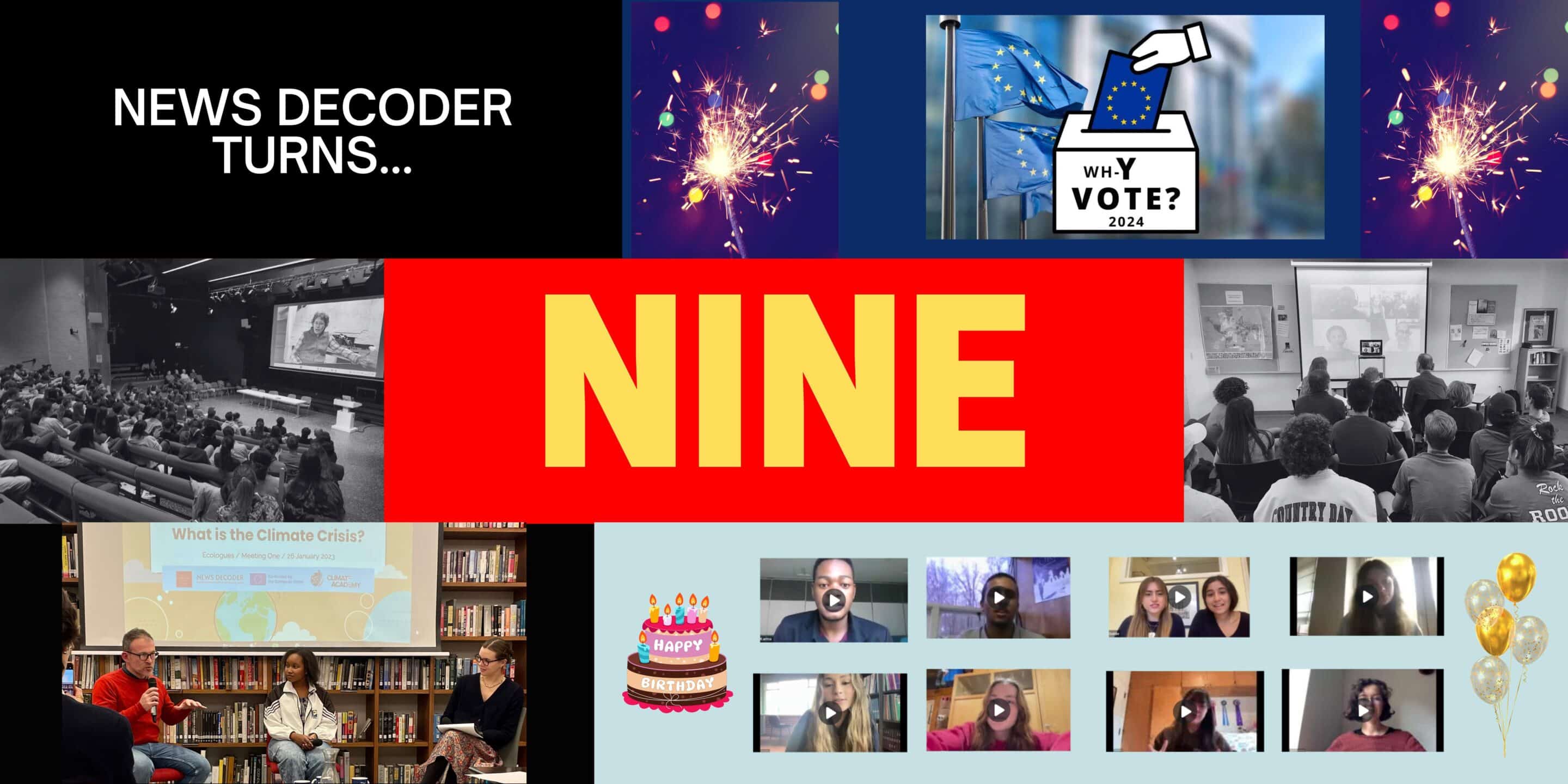News Decoder started with one journalist who sought to build global awareness in young people. Over the next nine years dozens of other journalists signed on.
Meet some of News Decoder’s correspondents.
When News Decoder got its start it was with the idea of helping young people understand how they are connected to global events and things happening far from where they live.
And even as we have expanded, working with schools to teach journalism, connecting students across borders through Zoom dialogues, and inspiring students to create podcasts through News Decoder clubs and camps, we’ve stayed faithful to that mission.
We now work with dozens of correspondents in countries all over the word: Peru, Hungary, Canada, Switzerland, Uganda, India, Sri Lanka, Rwanda, Australia, Indonesia, to name just a few places.
They write about complex topics: development funding, immigration, environmental conservation, international treaties, human rights, healthcare and war in a way that can engage students and help them understand important global issues. Correspondent Paul Spencer Sochaczewski has chased down the histories of controversial figures deep in the rainforests of Southeast Asia. Jeremy Solomons in Rwanda has explored identity issues that immigrants and expatriates struggle with.
Our correspondents have vast and diverse experiences. Many came out of the Reuters newswire service, having worked there with News Decoder founder Nelson Graves. But others have been physicians and policy makers.
Sharing vast expertise from across the globe
Some of our journalists have consulted for organizations like the United Nations or European Commission. Many are noted experts on everything from healthcare systems, climate change, space exploration, international finance and nuclear disarmament.
Take Alfonso Silva-Santisteban. He’s a public health physician who began working with News Decoder as part of a fellowship in global journalism at the Dalla Lana School of Public Health at the University of Toronto.

This week we’re celebrating News Decoder’s birthday with a look back at our evolution since 2015.
One article he wrote, about the murder of transgender sex workers in Peru, caught the attention of human rights lawyers who were trying to get help for LGBTQ+ victims of discrimination and violence.
Silva-Santisteban said he tries to weave topics he is passionate about into his research, but that journalism can have impact in different ways. “I think it’s a tool that allows us to have faster conversations and engage more more,” he said.
Photojournalist Enrique Shore got his start documenting human rights investigations in his native country of Argentina and has photographed Olympic competitions. For the past few years, Shore has been the eyes and ears of News Decoder at meetings that take place at the United Nations headquarters in New York.
“When I go to the UN and I take a picture of quite important meetings, these are the people who are deciding a lot of things that will be relevant in other parts of the world,” Shore said. “So it is great to be able to portray that and tell the story to others who are far away.”
Shining a spotlight
Too often hidden behind the articles you read, our correspondents have fascinating stories to tell about themselves. We spent some time getting to know them, delving deeper into the articles they’ve written and learning more about the writing process. We’re looking forward to sharing a new series of in-depth interviews with the experts behind our stories.
It is one way we strengthen the links between our media professionals and our students to show young people how the practice of journalism — finding important stories in their own communities and telling those stories to the world — can broaden their worldview, no matter what career they pursue.
It follows from our ongoing series we call Parallel (By)Lines where we pair one of our student authors with a correspondent who has reported on a similar topic. After School Year Abroad student Clover Choi wrote an article about the experience of a Ukrainian refugee in France, we paired her in a conversation with Helen Womack, a correspondent in Hungary who had written about the experience of Syrian refugees crossing Eastern Europe to reach Germany.
And we paired in a dialogue on Zoom student Goldie Zarabi, a student at The Hewitt School in New York, who had written an article about the changing landscape of abortion access in the United States with correspondent Susan Ruel who had written about how the Roe v. Wade U.S. Supreme Court decision that first legalized abortion in the United States changed the country.
Ultimately, we have tried to demonstrate to teens that it is possible to understand issues and problems that seem too complicated to process and show them that solutions can be found if people can work together across borders, whether those borders be geographic or based on long-standing cultural, religious or economic divisions.
“I get inspired when our correspondents can show how seemingly disparate problems are connected and that solutions can be found if you look for them in different places,” said News Decoder Educational News Director Marcy Burstiner. “Maggie Fox, for example, looked at people who were cutting down trees in environmentally-sensitive areas to pay for their health care.”
So if people are worried about the survival of orangutans or climate change, maybe they need to look at providing people with basic needs, Burstiner said. “These seemingly intractable problems are not, in fact, unsolvable,” Burstiner said. “News Decoder, through the journalism done by our correspondents and students, strives to show that.”
